World hunger is solvable. We produce enough food to feed everyone on this planet. Despite this, the global hunger crisis is only getting worse. Up to 783 million people don’t know where their next meal is coming from.
It’s not a question of Loblaws versus Sobeys. It’s a matter of whether they’ll eat at all.
This wasn’t part of the world’s plan. In 2015, all United Nations member states enthusiastically adopted the goal of Zero Hunger by 2030. But, since then, COVID, climate change and armed conflict have conspired to stall progress—even dragging it backward.
By 2023, the number of people facing elevated levels of food insecurity had more than doubled from three years earlier. More children were suffering and dying from hunger-related causes. The attainability of Zero Hunger was called into question.
The task lying before us is daunting to be sure. How much would it cost to end world hunger? In 2021, that figure was estimated at US $40 billion per year. Since then, the number of hungry people has escalated. So have the complications facing our world.
It’s so easy to shake our heads and give up. But we must not. We were on track to end world hunger before—and we can be again.
Here are 6 ways to begin tackling world hunger.
- Stare down those big hunger numbers.
- Remember the reasons world hunger shot up again.
- Consider new approaches to fighting world hunger.
- Ending world hunger starts at home.
- Help the world’s women reduce hunger where they live.
- Choose a charity that partners up for hunger relief.
1. Stare down those big hunger numbers.
The world hunger statistics in the news can blow our minds and break our hearts. We turn away because even one story of an emaciated child makes us feel hopeless. How can we handle the idea of millions?
By remembering that it’s not possible for any one person or organization to fix things. It’s not up to a single one of us to end world hunger—not all by ourselves.
It is up to us to keep our eyes open. To keep learning about what’s happening and why. To partner up with others to help. And to use our gifts to the best of our abilities.
Even within World Vision, our teams fight hard to remember that we’re not combatting world hunger alone. From the United Nations to the smallest grassroots group in South Sudan or Syria, millions of people and groups are working for the same goal.
We don’t need you to do it all. But we do need you, in any way you can help. Starting by reading this article.
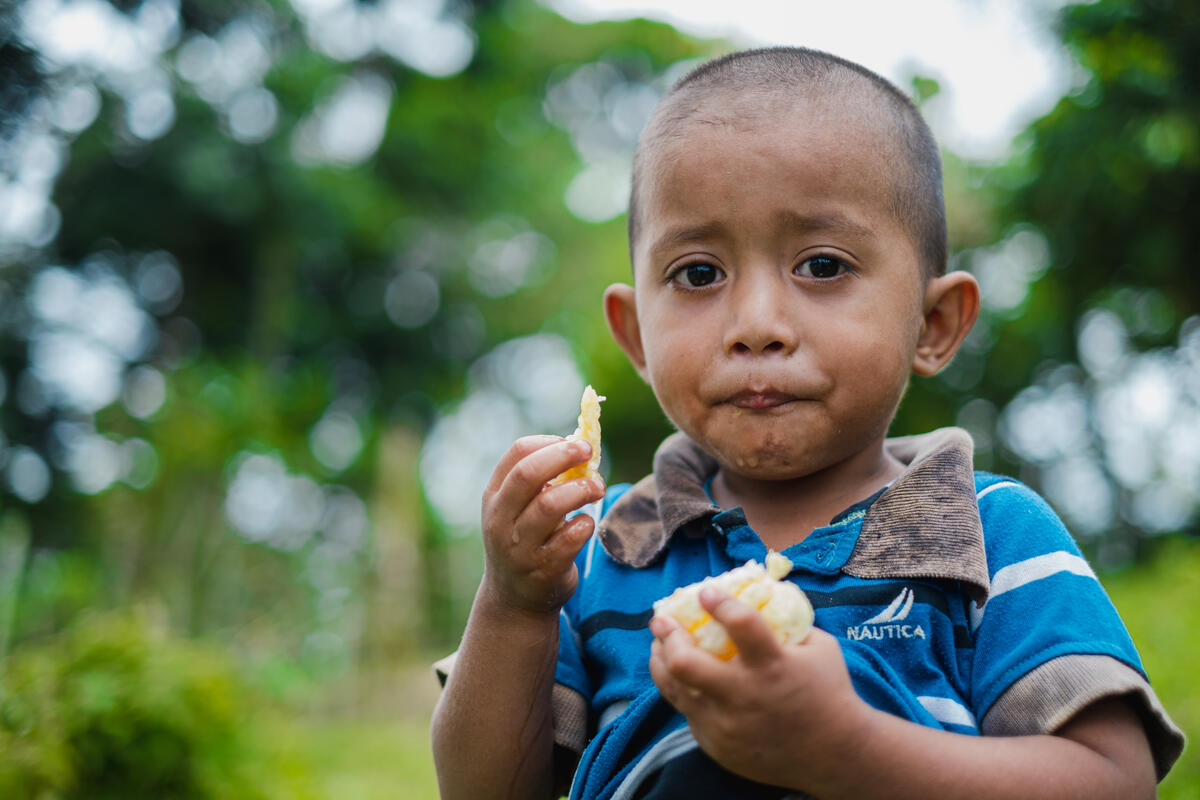
In Honduras, this family used to grow corn and beans exclusively. But climate change and a turbulent economy have caused output to plummet. World Vision started a field school nearby, to help farmers diversify their crops. They now cultivate vegetables like tomatoes, radishes and cilantro for nourishment and to see at the market for income. Photo: Andre Guardiola
2. Remember the reasons world hunger shot up again.
There are clear reasons why hunger levels have increased since 2015. Structural inequalities remain in place. And there’s no doubt that the global economic crisis has tightened the screws on families and communities everywhere.
In addition, COVID-19, climate change and armed conflict have further ramped up world hunger. Consider the relentless drought in parts of Africa. Or the impact of the Ukraine conflict on food supplies to poor countries. Or the body blow dealt by COVID-19 lockdowns to livelihoods everywhere.
It would be naïve not to see armed combat, climate change and the COVID-19 fallout as formidable new threats. But they are threats we can learn from. World hunger can only be ended with a multi-pronged strategy.
At World Vision, we understand that there’s no single approach to ensuring all the world’s people have sufficient and dependable nutritious food. We must work together on many levels at once, including:
- Teaching families about nutrition, so parents can plant or source to better nourish their children.
- Providing agricultural support in climate crisis, so families can raise drought-resistant crops using simple yet effective measures. We help them establish vegetable gardens.
- Training parents in additional livelihoods, so farmers have ways to provide for their families even different even amidst flooding or drought.
- Improving healthcare access, so severely malnourished children can get the care they need to recover and thrive. Nourishing pregnant moms plays another critical part.
- Creating education programs for children, even in regions where climate crisis and armed conflict have forced people from their homes. Children equipped to do more can one day earn better wages, providing for their own families.
- Supporting peace clubs so children fleeing conflict can learn the skills to live together in the wake of war. It’s armed conflict that so often destroys homes, fields and livelihoods, leaving people dangerously malnourished.
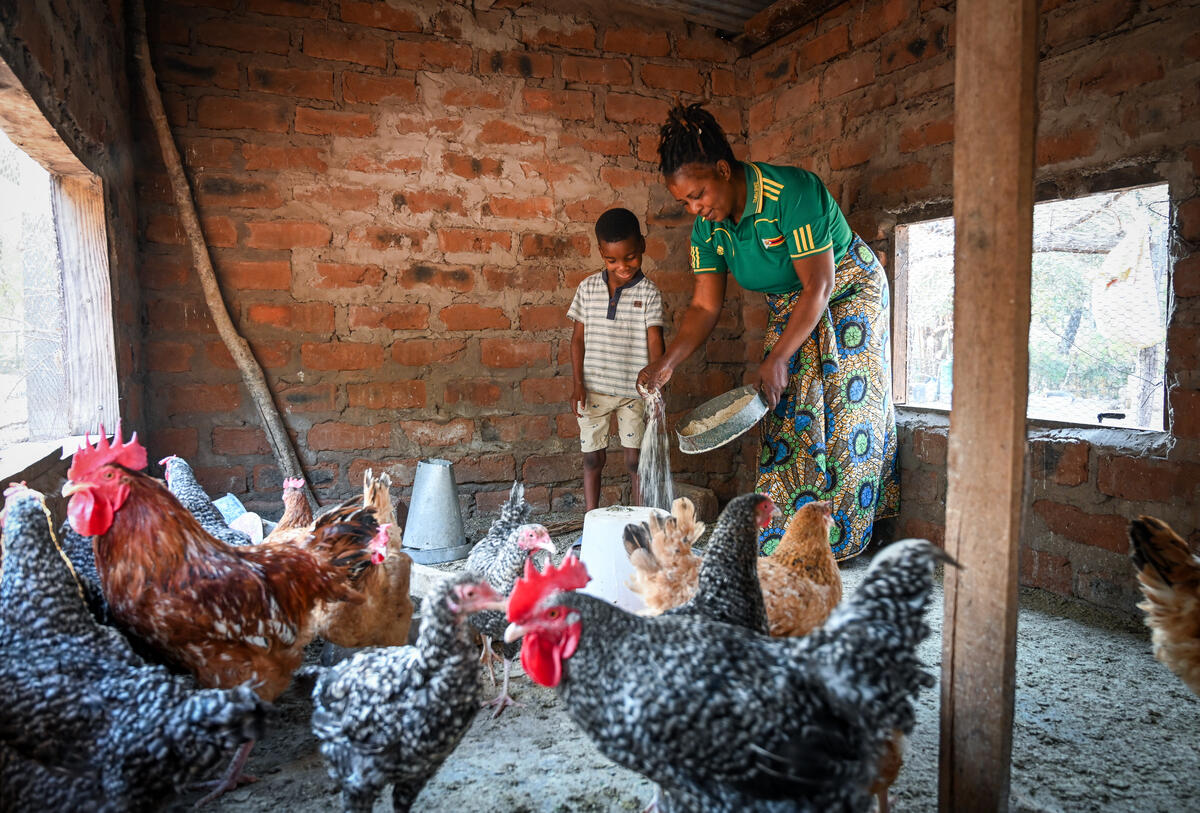
In Zambia, climate change is shriveling crops or washing them away. World Vision is helping families diversify their livelihoods, training them in animal husbandry and starting them off with a hen and rooster. Thanks to the eggs and income (selling chicks and eggs at market) many children in this community now eat three nutritious meals per day. Photo: Collins Kaumba
3. Consider new approaches to fighting world hunger.
For decades, people donating to help end world hunger might help provide emergency food, like bags of rice or beans. Nowadays, World Vision is using an additional approach: cash-for-food to families, so they can choose and purchase their own food supplies.
Cash-for food has several advantages:
- It honours the dignity of each human being, in situations where crisis has removed nearly every choice they once had. Read how it saved lives during COVID-19 lockdowns.
- It empowers parents with the ability to better nourish children with a variety of foods. World Vision delivers non-perishables like grains to help keep people alive. Cash-for-food can equip them to purchase produce, eggs or meat at local markets.
- It boosts local economies in times of crisis when people have exhausted their savings and can purchase little.
Cash-for-food is just one component in ending world hunger. But it contributes on many levels, to strengthen children, families and communities. 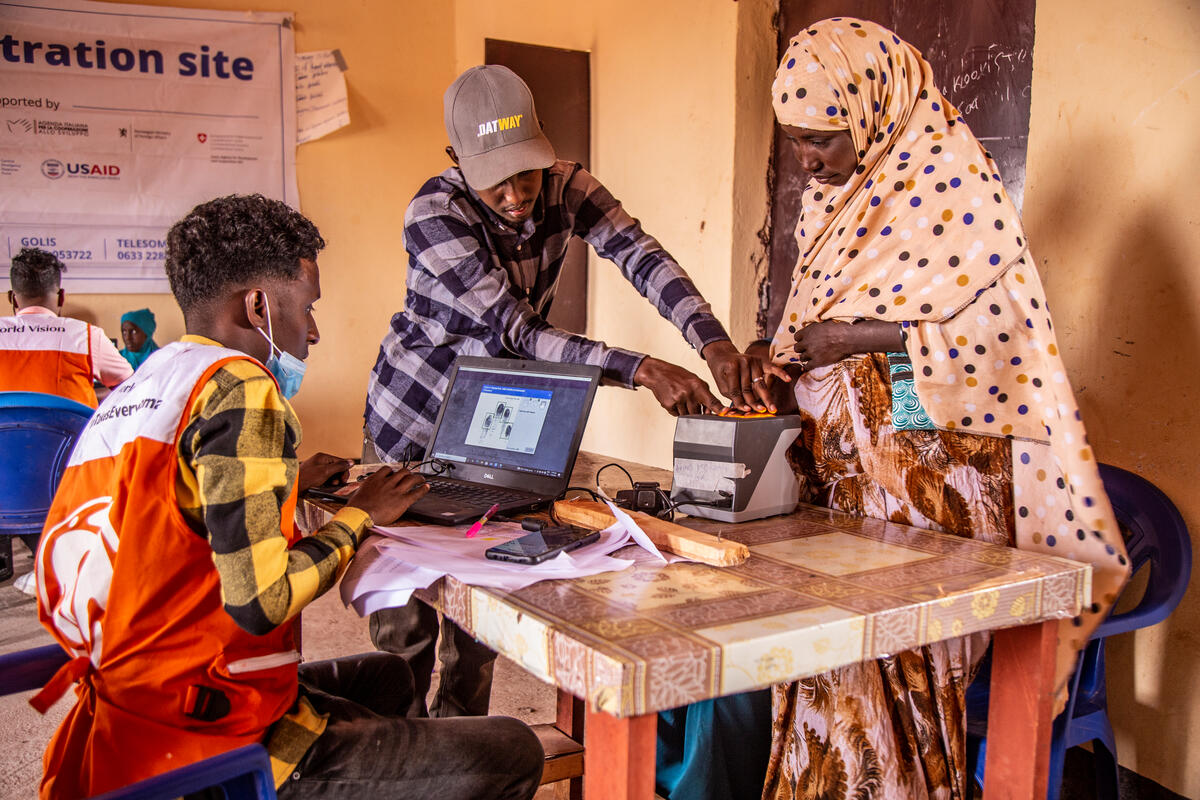
A mother registers for cash-for-food transfers at a camp for displaced Somali families. She and her surviving children moved here after two daughters died from extreme hunger. World Vision provides vouchers to 38,000 families here every month, in partnership with the World Food Programme. Photo: World Vision Somalia
4. Ending world hunger starts at home.
Remember the major contributors to global hunger—including climate change? Ironically, the people who suffer most cruelly from extreme hunger are those who have done the least to warm the planet. The vast majority don’t own cars. Millions can’t access electricity, oil or natural gas.
This World Vision story has some suggestions to help end world hunger, starting with your own home and habits. Some may seem inconvenient. But remember what’s at stake.
Even those of us in Canada who are struggling with food prices can change our habits for the good of the world’s people. When you consider how climate change contributes to global hunger, you’ll understand why that’s important.
5. Help the world’s women reduce hunger where they live.
Women and girls account for some 70 per cent of the world's hungriest people. Even in their own homes, females often eat least, last and of the poorest-quality food.
Not only is this morally wrong. Not only does it trample the rights of girls and women. It hurts communities, countries and the world.
Women who have enough nutritious food have the strength and drive to nourish those around them. World Vision prioritizes partnerships with women, teaching and equipping them through women-led farms and small businesses. This in turn helps women employ more mothers, so they can nourish their own hungry children—girls included.
In doubt about the difference girls and women can make in ending world hunger? Check out some of these stories, from both inside and outside of World Vision.
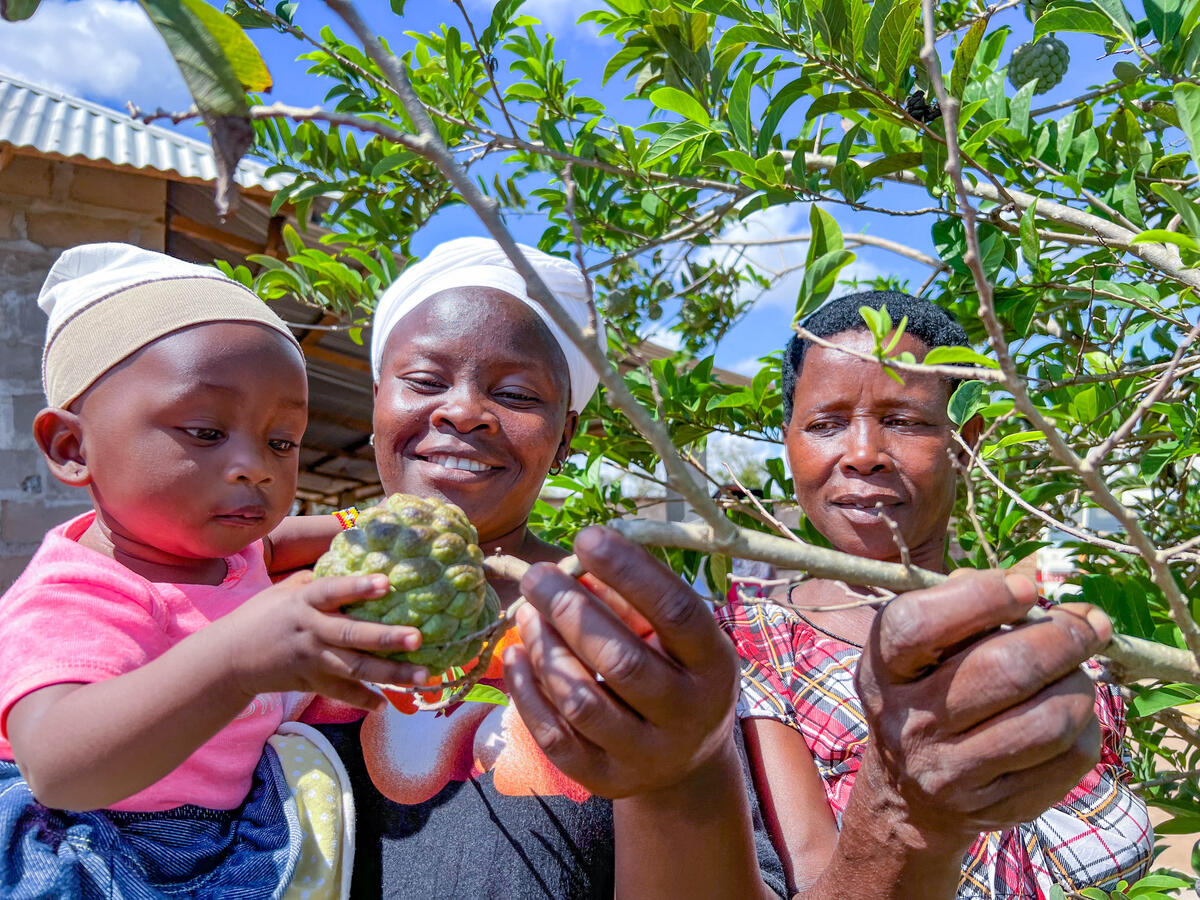
In Kenya, a World Vision program helps women workers become business owners, producing abundant harvests of maize, fruit and vegetables. This creates jobs for other women, who use their wages to provide nutritious food for their children. Photo: Martin Muluka
6. Choose a charity that partners up for hunger relief.
At the start of this article, we reminded you that no one person, organization or global body can end world hunger alone. That’s why partnerships are so critical.
If you’re considering giving to charity, choose an organization that harnesses the power of partnerships to help nourish hungry families. Here are a few examples:
- World Vision and the World Food Programme helped 3,836,601 people receive food and cash assistance in 2022 alone. For close to two decades, we have been the WFP’s non-governmental partner. Our two organizations have partnered to fulfill their shared vision for a hunger-free world.
- World Vision teams partner up with local schools, grassroots organizations and where appropriate, faith groups in the communities of the children we serve. We provide hunger help through initiatives like school feeding programs.
- World Vision works with other international aid and development organizations through Canada’s Humanitarian Coalition. In 2023, we have worked with the coalition to confront the global hunger crisis.
- World Vision works with governments to help end world hunger—both our own, and governments in countries where we serve children. From Canada’s government, we receive grants for food and nutrition-related programs which save lives. Overseas, we join with departments of agriculture or health to ensure people are fed.
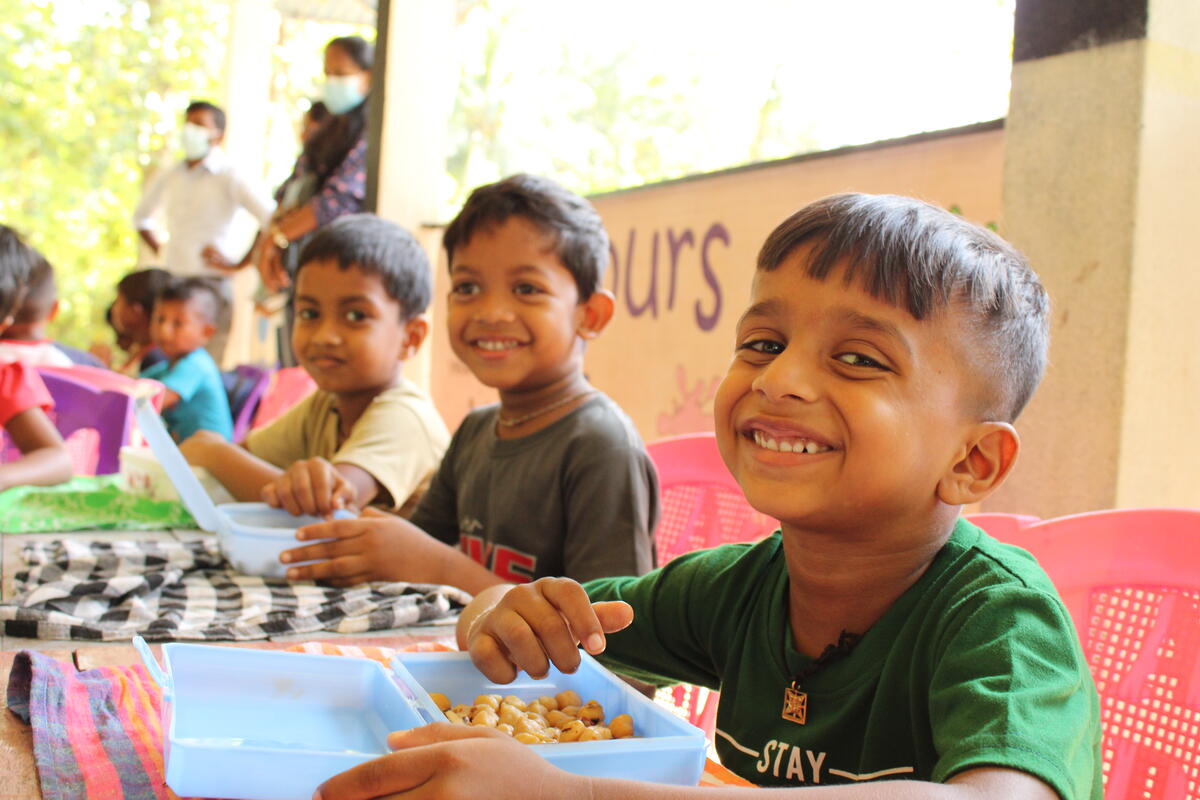
In Sri Lanka, children at 85 preschools enjoy nutritious school lunches each day, thanks to Australia’s government and with the help of World Vision Australia. The other benefit? More children attend, improving their chances at better wages as adults—and providing nutritious food for their own children someday. Photo: Melissa Sprake
Always and everywhere, World Vision partners with parents and caregivers to help them feed their children. People here in Canada donating through our Gift Catalogue can give gifts like:
Not only does this help sustain children in the immediate term. These gifts equip families to nourish and provide for children as they grow—even in the face of a global food crisis.
It’s important to remember that less than 10 years ago, the UN’s Sustainable Development Goal of Zero Hunger by 2030 was something the world saw as achievable. The end was in sight.
And with each person’s help, it can be so again.